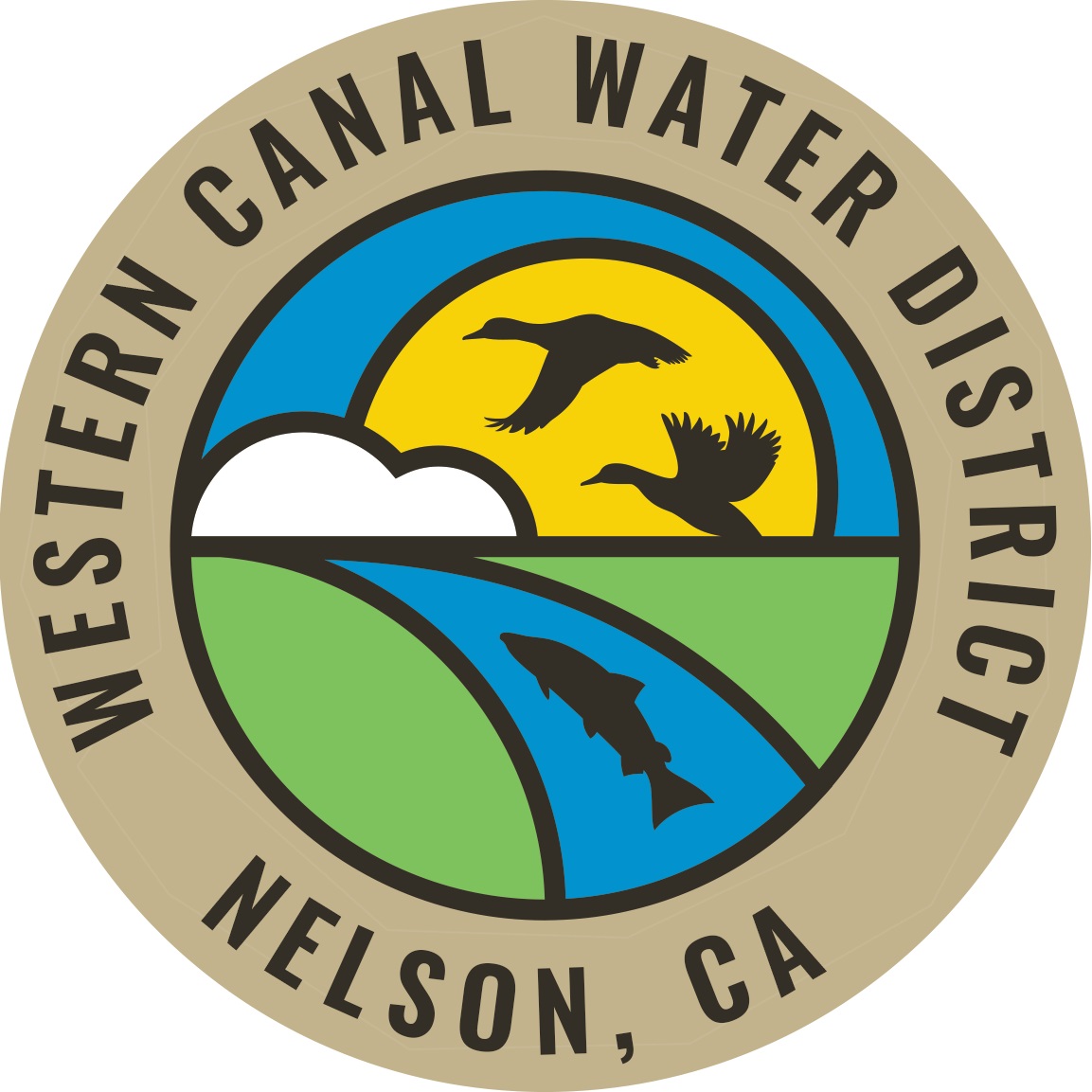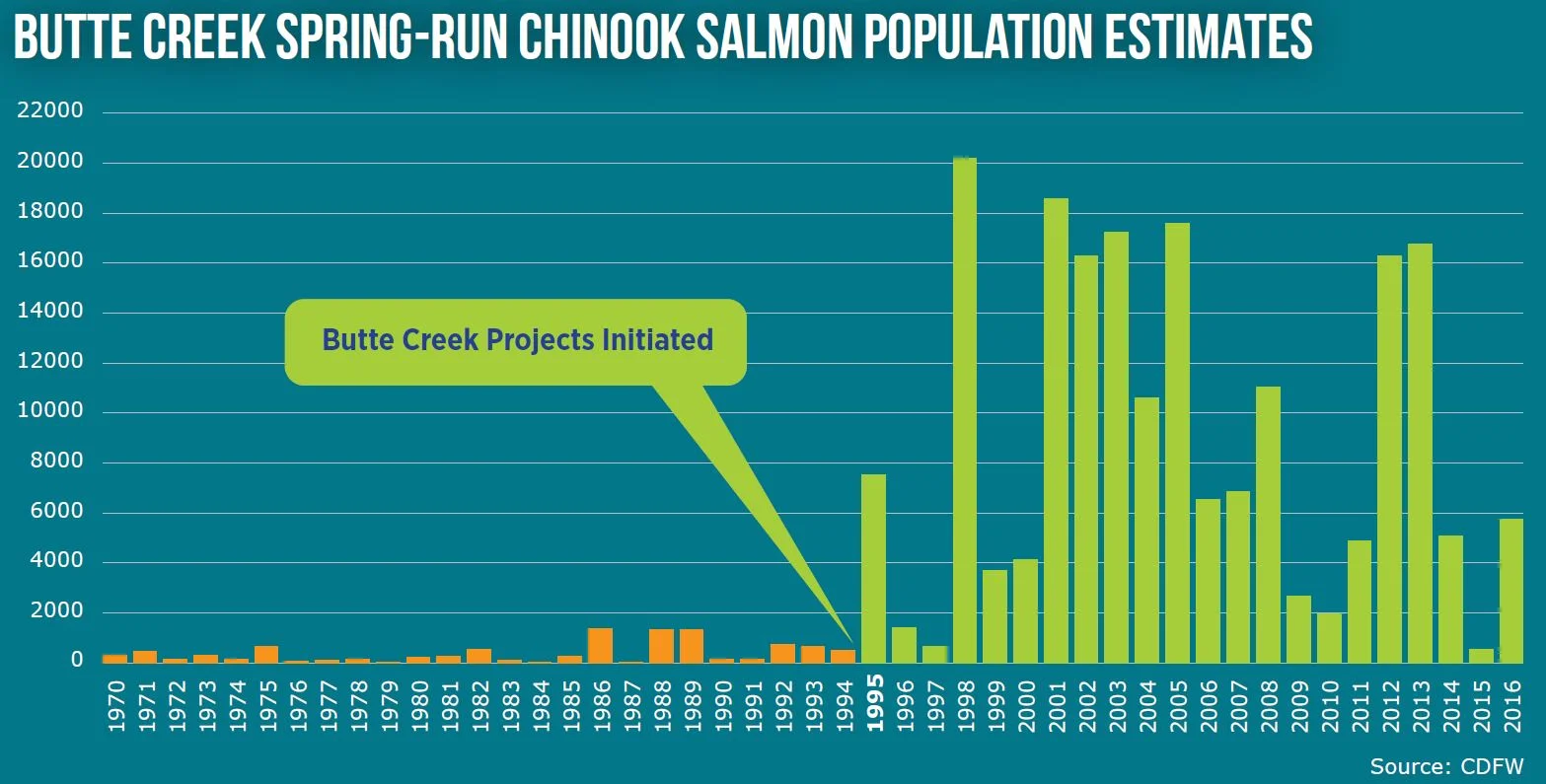For more than two decades, Butte Creek salmon numbers have soared, thanks to an innovative, wide-ranging collaboration between landowners, urban and agricultural water managers, conservationists and state and federal officials. This was a groundbreaking effort that helped guide and contribute to a larger, concerted program to enhance our environment by improving spawning and migratory corridors for salmon and reconnecting them to historic floodplains in the region.
For more information visit sharingbuttecreek.org.
In 2017 Western Canal Water District celebrated the 20th Anniversary of the Butte Creek spring-run Chinook Salmon Fish Passage Improvement Project and continues to spread the word on "FunctionFlow. Five years later, in 2022 we are celebrating over 25 years of continued recovery success!!
For a look back at our 20th year celebrations in 2017 - community outreach events can be viewed here and highlights of the 20th Anniversary Celebration co-sponsored by the Gorrill Ranch and Northern California Water Association can be viewed here.
Butte Creek is one of only four Sacramento River Tributaries with remaining populations of spring-run Chinook salmon. Resource agencies and environmental groups value Butte Creek as a keystone in preserving and recovering the spring-run. According to Newsweek, the project is a symbol and represents a scene that will be repeated scores of times throughout the West in the future.
Construction began in May 1997 and completed November 1997. Unprecedented partnerships developed during this project were essential to its success.; key stakeholders and participants included:
Western Canal Water District
U.S. Department of Interior (USFWS, USBR)
California Department of Fish and Game
Ray Toney & Associates
T&S Construction
CH2M Hill
The overall cost for implementing the project was $9.5 million, including all stages of design, permitting, environmental documentation, construction, construction management, and environmental mitigation. Project funding was provided through an innovative cost sharing partnership among Western Canal Water District, the Department of Interior, the Bay-Delta Accord’s CALFED Category III Program and Tracey Pumps Mitigation Fund. Additionally, the California Urban Water Agencies provided funding for the Bay-Delta Category III Program. A copy of the WCWD Project Summary Sheet can be downloaded here (5MB).
Environmental Benefits
Removal of four dams from Butte Creek
Restoring 25 miles of unimpeded flow
Eliminated 12 unscreened diversions
Make entire District “fish safe”
Augment flow in Butte Creek
Major Project Facilities
Gary N. Brown Butte Creek Siphon
2,500 feet of additional pipelines
Four new pump stations
Seven new check structures
24,000 feet of new and improved canals





